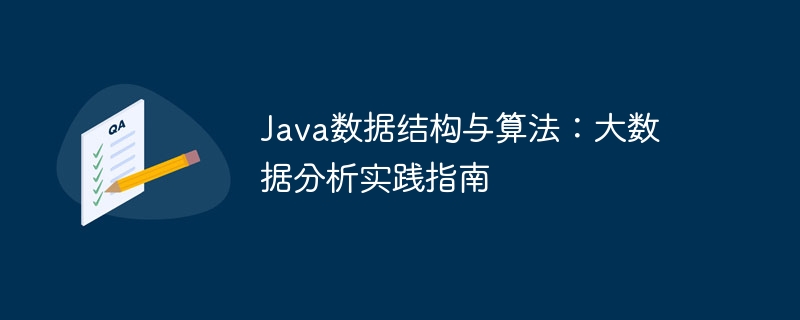
Big data analysis applications of data structures and algorithms in Java Master data structures (arrays, linked lists, stacks, queues, hash tables) and algorithms (sorting, search, hashing, graph theory, and union lookup) for big data Data analysis is crucial. These data structures and algorithms provide mechanisms for efficient storage, management, and processing of massive amounts of data. Practical examples demonstrate the application of these concepts, such as using hash tables to quickly find word frequencies and using graph algorithms to find relevant nodes in social networks.

Introduction
Master Data Structures and Algorithms Essential for big data analysis. This article will provide a practical guide to introduce key data structures and algorithms in Java, and demonstrate their application in big data analysis through practical cases.
Data structure
Algorithm
Practical case
Case 1: Use hash table to quickly find word frequency
import java.util.HashMap;
import java.util.StringJoiner;
public class WordFrequencyCounter {
public static void main(String[] args) {
String text = "This is an example text to count word frequencies";
// 使用哈希表存储单词及其频率
HashMap<String, Integer> frequencyMap = new HashMap<>();
// 将文本拆分为单词并将其添加到哈希表中
String[] words = text.split(" ");
for (String word : words) {
frequencyMap.put(word, frequencyMap.getOrDefault(word, 0) + 1);
}
// 从哈希表中打印每个单词及其频率
StringJoiner output = new StringJoiner("\n");
for (String word : frequencyMap.keySet()) {
output.add(word + ": " + frequencyMap.get(word));
}
System.out.println(output);
}
}Case 2: Using graph algorithms to find relevant nodes in social networks
import java.util.*;
public class SocialNetworkAnalyzer {
public static void main(String[] args) {
// 创建一个图来表示社交网络
Map<String, Set<String>> graph = new HashMap<>();
// 添加节点和边到图中
graph.put("Alice", new HashSet<>(Arrays.asList("Bob", "Carol")));
graph.put("Bob", new HashSet<>(Collections.singleton("Dave")));
...
// 使用广度优先搜索找到与 Alice 相关的所有节点
Queue<String> queue = new LinkedList<>();
queue.add("Alice");
Set<String> visited = new HashSet<>();
while (!queue.isEmpty()) {
String current = queue.remove();
visited.add(current);
for (String neighbor : graph.get(current)) {
if (!visited.contains(neighbor)) {
queue.add(neighbor);
}
}
}
// 打印与 Alice 相关的所有节点
System.out.println(visited);
}
}Conclusion
By mastering data structures and algorithms, Java programmers can manage efficiently and analyzing big data. This article provides practical examples that demonstrate the practical application of these concepts, enabling programmers to build complex and efficient big data analytics solutions.
The above is the detailed content of Java Data Structures and Algorithms: A Practical Guide to Big Data Analysis. For more information, please follow other related articles on the PHP Chinese website!
